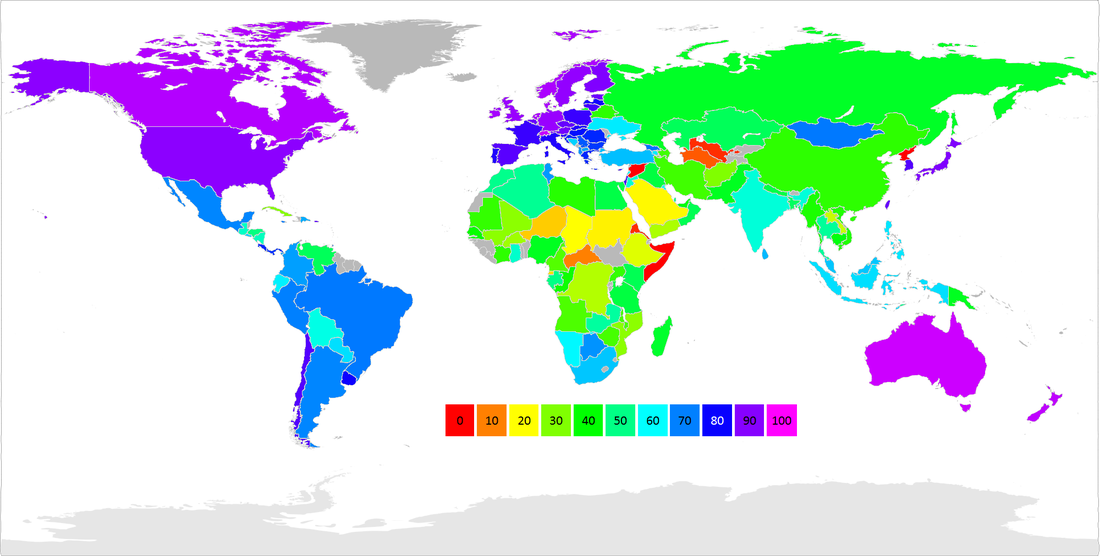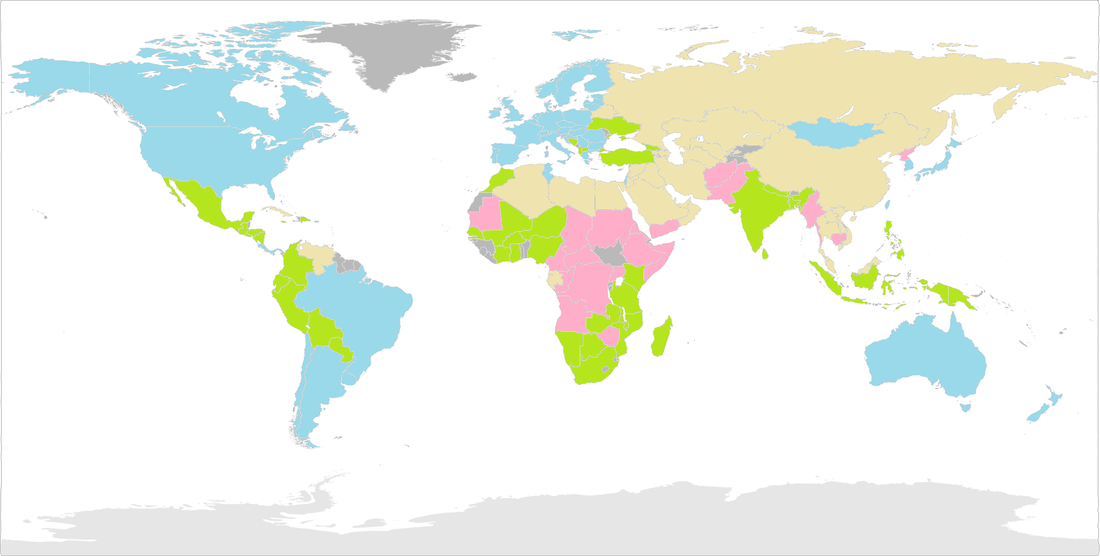This index provides an overview of quality of life in 143 countries and territories. It combines information from the following public sources:
Australia and New Zealand have the highest scores, as last year, at 100.00 and 99.45. They are followed by South Korea, 99.09; Switzerland, 99.02; Denmark, 98.76; and Germany, the United Kingdom, and the Netherlands are above 97. The United States of America scores 89.25, China 52.26, and India 54.42.
The three main variables are positively correlated. A cluster analysis reveals 4 clusters, as shown in the map below. The light blue cluster has high political freedom and high human development. The light green cluster has high political freedom but low human development. The light yellow cluster has low political freedom but high human development. The pink cluster has low political freedom and low human development.
- 25% is the Freedom in the World index published by Freedom House, of which 40% is political rights and 60% is civil liberties;
- 25% is the Index of Economic Freedom published by the Heritage Foundation and the Wall Street Journal;
- 50% is the Human Development Index published by the United Nations, which comprises life expectancy, average years of education, and per capita income (purchasing power parity).
Australia and New Zealand have the highest scores, as last year, at 100.00 and 99.45. They are followed by South Korea, 99.09; Switzerland, 99.02; Denmark, 98.76; and Germany, the United Kingdom, and the Netherlands are above 97. The United States of America scores 89.25, China 52.26, and India 54.42.
The three main variables are positively correlated. A cluster analysis reveals 4 clusters, as shown in the map below. The light blue cluster has high political freedom and high human development. The light green cluster has high political freedom but low human development. The light yellow cluster has low political freedom but high human development. The pink cluster has low political freedom and low human development.


 RSS Feed
RSS Feed